Jair Augusto Bottega
Parallel Distributional Deep Reinforcement Learning for Mapless Navigation of Terrestrial Mobile Robots
Aug 11, 2024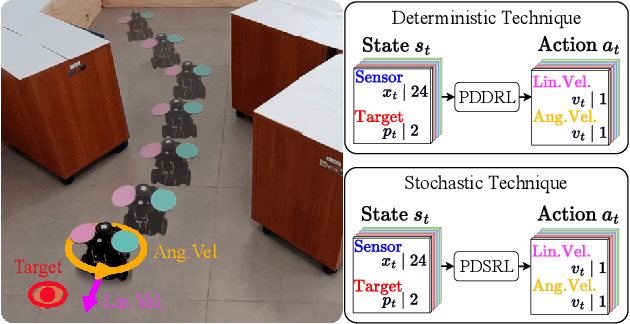

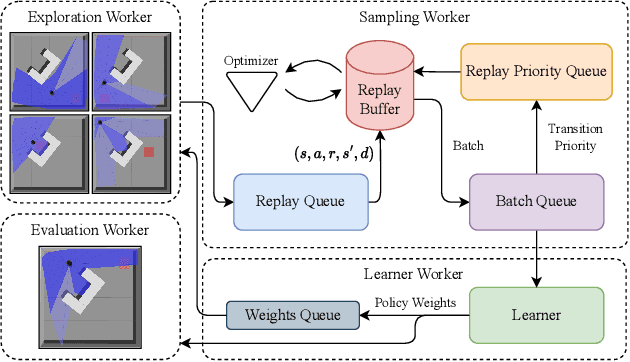

Abstract:This paper introduces novel deep reinforcement learning (Deep-RL) techniques using parallel distributional actor-critic networks for navigating terrestrial mobile robots. Our approaches use laser range findings, relative distance, and angle to the target to guide the robot. We trained agents in the Gazebo simulator and deployed them in real scenarios. Results show that parallel distributional Deep-RL algorithms enhance decision-making and outperform non-distributional and behavior-based approaches in navigation and spatial generalization.
CURLing the Dream: Contrastive Representations for World Modeling in Reinforcement Learning
Aug 11, 2024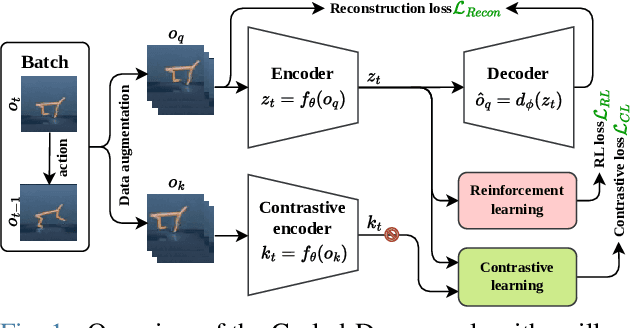



Abstract:In this work, we present Curled-Dreamer, a novel reinforcement learning algorithm that integrates contrastive learning into the DreamerV3 framework to enhance performance in visual reinforcement learning tasks. By incorporating the contrastive loss from the CURL algorithm and a reconstruction loss from autoencoder, Curled-Dreamer achieves significant improvements in various DeepMind Control Suite tasks. Our extensive experiments demonstrate that Curled-Dreamer consistently outperforms state-of-the-art algorithms, achieving higher mean and median scores across a diverse set of tasks. The results indicate that the proposed approach not only accelerates learning but also enhances the robustness of the learned policies. This work highlights the potential of combining different learning paradigms to achieve superior performance in reinforcement learning applications.
Kolmogorov-Arnold Network for Online Reinforcement Learning
Aug 09, 2024



Abstract:Kolmogorov-Arnold Networks (KANs) have shown potential as an alternative to Multi-Layer Perceptrons (MLPs) in neural networks, providing universal function approximation with fewer parameters and reduced memory usage. In this paper, we explore the use of KANs as function approximators within the Proximal Policy Optimization (PPO) algorithm. We evaluate this approach by comparing its performance to the original MLP-based PPO using the DeepMind Control Proprio Robotics benchmark. Our results indicate that the KAN-based reinforcement learning algorithm can achieve comparable performance to its MLP-based counterpart, often with fewer parameters. These findings suggest that KANs may offer a more efficient option for reinforcement learning models.
Enhanced Low-Dimensional Sensing Mapless Navigation of Terrestrial Mobile Robots Using Double Deep Reinforcement Learning Techniques
Oct 20, 2023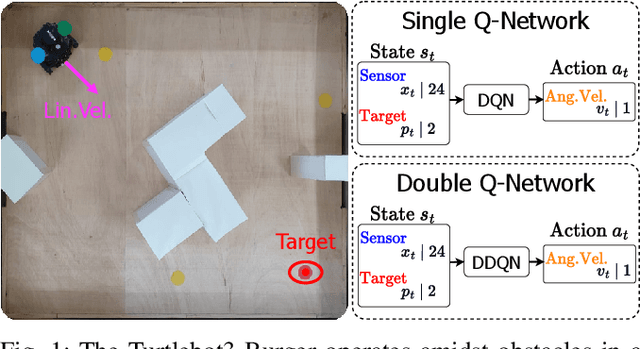
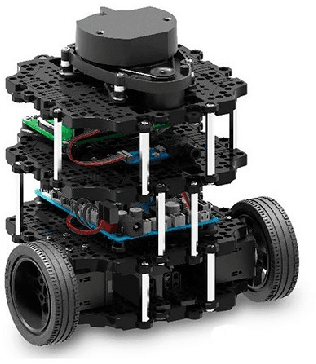
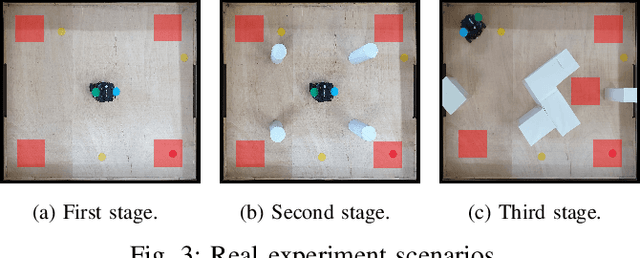

Abstract:In this study, we present two distinct approaches within the realm of Deep Reinforcement Learning (Deep-RL) aimed at enhancing mapless navigation for a ground-based mobile robot. The research methodology primarily involves a comparative analysis between a Deep-RL strategy grounded in the foundational Deep Q-Network (DQN) algorithm, and an alternative approach based on the Double Deep Q-Network (DDQN) algorithm. The agents in these approaches leverage 24 measurements from laser range sampling, coupled with the agent's positional differentials and orientation relative to the target. This amalgamation of data influences the agents' determinations regarding navigation, ultimately dictating the robot's velocities. By embracing this parsimonious sensory framework as proposed, we successfully showcase the training of an agent for proficiently executing navigation tasks and adeptly circumventing obstacles. Notably, this accomplishment is attained without a dependency on intricate sensory inputs like those inherent to image-centric methodologies. The proposed methodology is evaluated in three different real environments, revealing that Double Deep structures significantly enhance the navigation capabilities of mobile robots compared to simple Q structures.
Double Deep Reinforcement Learning Techniques for Low Dimensional Sensing Mapless Navigation of Terrestrial Mobile Robots
Jan 26, 2023Abstract:In this work, we present two Deep Reinforcement Learning (Deep-RL) approaches to enhance the problem of mapless navigation for a terrestrial mobile robot. Our methodology focus on comparing a Deep-RL technique based on the Deep Q-Network (DQN) algorithm with a second one based on the Double Deep Q-Network (DDQN) algorithm. We use 24 laser measurement samples and the relative position and angle of the agent to the target as information for our agents, which provide the actions as velocities for our robot. By using a low-dimensional sensing structure of learning, we show that it is possible to train an agent to perform navigation-related tasks and obstacle avoidance without using complex sensing information. The proposed methodology was successfully used in three distinct simulated environments. Overall, it was shown that Double Deep structures further enhance the problem for the navigation of mobile robots when compared to the ones with simple Q structures.
 Add to Chrome
Add to Chrome Add to Firefox
Add to Firefox Add to Edge
Add to Edge